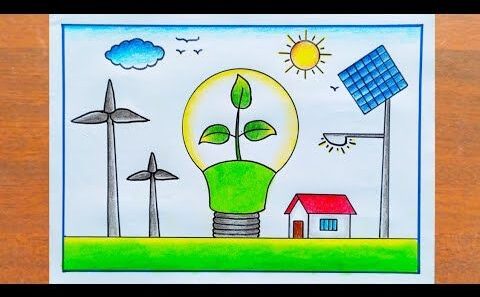In a world increasingly attuned to the ramifications of energy consumption, the quest for sustainable electric energy use has become paramount. Have you ever pondered the question: How can we live comfortably while also being conscientious about our energy footprint? This inquiry forms the crux of embracing a lifestyle that conserves electric energy—power smarter, not harder.
To address this challenge, it is essential to examine both the macro and micro aspects of energy conservation. A fundamental understanding of energy consumption patterns allows individuals and organizations to implement effective strategies that yield tangible results. Herein, we shall explore practical methods, technological innovations, and behavioral adjustments that can aid in the quest for energy efficiency.
Let us begin with the advent of technology. The proliferation of smart home devices has revolutionized energy management within residential settings. Smart thermostats, for instance, dynamically adjust heating and cooling settings based on occupancy and preferences, thereby ensuring that energy is not squandered in empty rooms. When paired with energy-efficient appliances, homeowners can experience substantial reductions in their electric bills. Employing such technology is not solely a financial decision but an ethical one, promoting sustainability at the individual level.
Moreover, solar energy systems present a robust alternative to traditional fossil fuel sources. By harnessing the power of the sun, homeowners can significantly reduce their reliance on grid electricity. Installing solar panels may initially require a hefty investment, but the long-term savings and environmental benefits create a compelling argument for their adoption. Additionally, many municipalities offer incentives for solar energy installation, making this innovative solution increasingly accessible.
Next, let us delve into the significance of energy efficiency. The Energy Star program is a prime example of how efficiency standards can facilitate better energy use. Appliances and products that receive the Energy Star label meet stringent efficiency guidelines set by the U.S. Environmental Protection Agency. Investing in such products contributes to a reduction in energy consumption, benefiting not only the environment but also the consumer’s pocket. Educational endeavors are essential here; raising awareness about these labels can empower consumers to make informed choices while shopping.
Another consideration in energy conservation involves reevaluating daily habits. Simple changes, such as turning off lights in unoccupied rooms, unplugging devices not in use, and utilizing natural light during the day can yield significant energy savings. However, how often do we find ourselves neglecting these seemingly benign actions? The challenge lies in cultivating a heightened awareness of our daily energy consumption habits. Embracing a mindset geared towards energy mindfulness can transform mundane routines into opportunities for conservation.
Additionally, let’s address the role of energy management systems within businesses and organizations. These systems provide insights into energy usage patterns and help identify areas for improvement. For instance, many corporations are adopting a principle known as “demand response,” which allows them to reduce energy consumption during peak hours when electricity is most expensive and less sustainable. This involves not merely a shift in usage patterns but also a cultural change within the organizational fabric, promoting collective responsibility towards energy conservation.
Furthermore, the integration of renewable energy sources into the grid is instrumental in the transition toward a sustainable electric future. Wind, solar, and hydropower contribute to diversifying energy portfolios, enhancing resilience against the unpredictability of fossil fuels. Policymakers and utilities alike must prioritize investments in renewable infrastructure, creating pathways for broader adoption while safeguarding ecosystems from the adverse effects of excessive energy extraction. However, the challenge remains: how do we harmoniously balance economic growth while shifting towards renewable resources?
As we contemplate the complexities of energy conservation, one must not overlook the significance of community engagement. Local initiatives that promote sustainable practices, such as community solar projects, encourage collaboration and shared responsibility. Such projects empower communities to take charge of their energy futures, ensuring that sustainability is not merely an abstract concept but a community-driven reality. Maintaining momentum through public education campaigns can instigate a cultural shift towards prioritizing energy conservation.
Moreover, we must also focus on the importance of education surrounding climate change and energy conservation. School curricula that integrate environmental science and energy efficiency teach future generations about the importance of conserving electric energy. Institutions can cultivate stewardship and awareness at an early age, ensuring that children grow up with a strong sense of responsibility towards their environments. This generational shift can foster a societal embrace of energy conservation, forging pathways for sustainable living.
As we surmount the myriad challenges of conserving electric energy, let us not discount the role of innovation. Those unique ideas—such as converting food waste into bioenergy or exploring the latest in energy storage technology—hold promise for revolutionizing how we think about and use energy. The collaboration between industries, academia, and governments can yield groundbreaking solutions that challenge the status quo.
Ultimately, the essence of energy conservation resides in the convergence of technology, habits, education, and community. It begs the question: Are we ready to embrace the challenge of powering smarter, not harder? The road to significant change does not emerge overnight; rather, it is paved through consistent, well-informed actions. Engaging with these principles of energy conservation can lead to a healthier planet and a brighter, sustainable future for all.








